Raspberry Pi 3 16gb Sd Card
Best microSD Cards for Raspberry Pi 2022
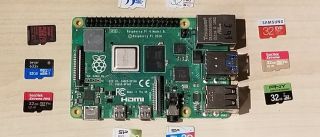
Different most other mod computing devices, most Raspberry Pis take no internal storage, relying instead on removable microSD cards as their primary kick drives. While it's true that you can boot a Raspberry Pi 4 via a USB SSD or Flash Bulldoze, most of the fourth dimension, it's easier, more than affordable and an overall amend idea to stick with a microSD card.
Simply which microSD carte du jour should yous buy for your Raspberry Pi? To help find the respond, nosotros tested ten dissimilar 32GB cards on a Raspberry Pi 4, a Raspberry Pi iii B+ and a Raspberry Pi Nothing Due west to encounter which offers the best performance for the money.
We chose the 32GB chapters considering it offers more than enough room for almost apply cases while non beingness appreciably more expensive than 16 or 8GB cards. Raspberry Pi OS can run on a card that'due south as small equally 8GB (see how to set up a Raspberry Pi) if used with the Low-cal version of the OS. Just for the total Raspberry Pi feel you lot will need the full install and that leaves you very little, if any, extra space on an 8GB carte du jour. You can claw back some space on your SD menu, simply with micro SD card prices beingness and so low, now is the time to expand your storage. With every update and release gradually using more and more of your card, 8GB volition soon become too small for a typical setup. If emulation is your goal so 32GB should be the bare minimum as PlayStation i CDROM images weigh in at around 700MB, so 10 games can hands eat upward around 25% of your micro SD storage.
The All-time microSD Cards for Raspberry Pi

Nosotros're honestly shocked that the best performing Raspberry Pi microSD carte du jour in our roundup is besides the cheapest one and comes from a lesser-known brand. It's besides rated UHS Speed i rather than 3, although these ratings are largely meaningless (at least for Pi owners). In fact, we were and so surprised at this card's performance that we tested a second unit to make sure the outset one wasn't a fluke.
For a cost of just $6.99 (£5.99) at publishing time, the Silicon Ability 3D NAND achieved the highest speeds on the Raspberry Pi iv in about all the IOzone tests, especially with 4K random writes. It besides, past a hair, loaded all of our apps fastest on the Pi 4, though its boot time was second slowest. The Silicon Power NAND 3D carte du jour besides performed well on Raspberry Pi 3 B+ and Pi Nada W, though it didn't lead in every bit many categories.
During our testing nosotros noticed that this card has ane huge advantage over most of its competitors: the ability to physically write on it. Because the surface is partially white, you tin can scribble on it with a Sharpie marker. That helps immensely when you have multiple cards in a drawer and don't know which is which.
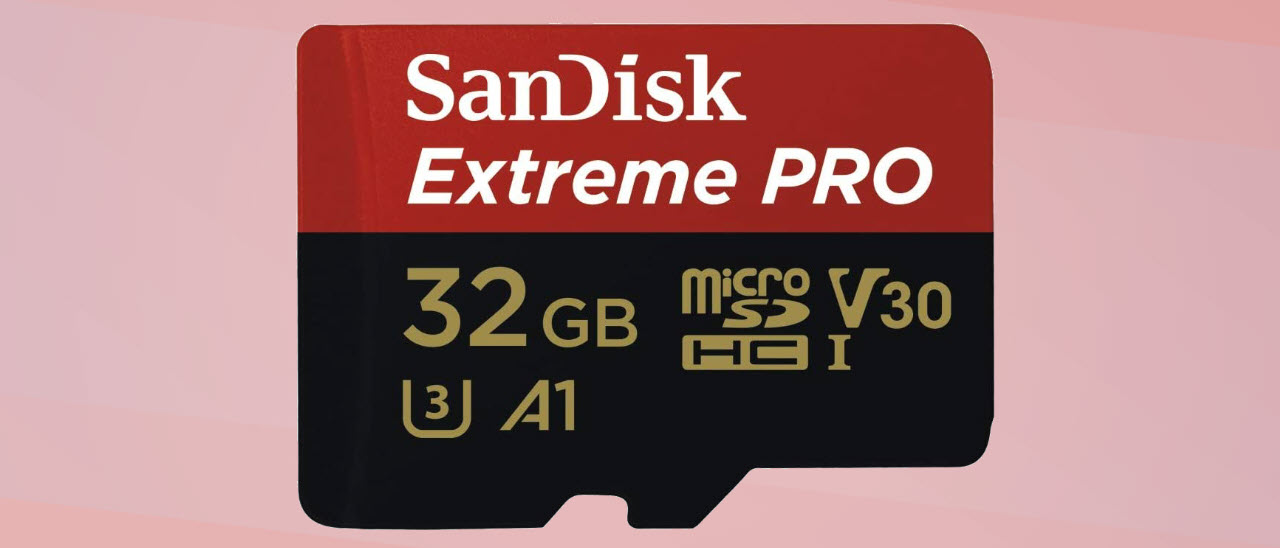
SanDisk claims that the Farthermost Pro tin can read at up to 100 MBps and write at up to 90 MBps and has labeled information technology with a UHS rating of iii, a Video Speed Rating of xxx and an Application Speed rating of A1. As nosotros note below, these ratings aren't very useful, simply nonetheless, this card is indeed one of the fastest around.
On the Raspberry Pi three B+, the SanDisk Extreme Pro finished first in six out of eight IOzone tests, including random 4K reads and writes. On Raspberry Pi 4, the card was within a few tenths of a second of the fastest application open times on the Raspberry Pi 4 and information technology was 0.5 MBps or less behind the leader in the all-important 4K random read and write speeds on IOzone. Information technology also had the fastest sequential write speed on the Raspberry Pi Diagnostic examination.
SanDisk backs the Farthermost Pro with a limited lifetime warranty and claims that it is waterproof, shockproof and X-ray-proof.

The Kingston Canvas React was in the upper performance tier on nearly all of our Raspberry Pi microSD menu tests and information technology stood out by beingness the fastest booter on both the Raspberry Pi 4 and Raspberry Pi iii B+. Information technology likewise provided application open times that were consistently among the all-time.
The carte'southward but existent downside is modest (merely not terrible) 4K reads and writes on the Raspberry Pi 4. On the Raspberry Pi 3 and Naught, which have a slower microSD carte reader, its 4K scores were amend relative to the competition.
Kingston backs the Canvas React with a express lifetime warranty, but information technology does not merits that the carte du jour is waterproof or shockproof in its market materials.
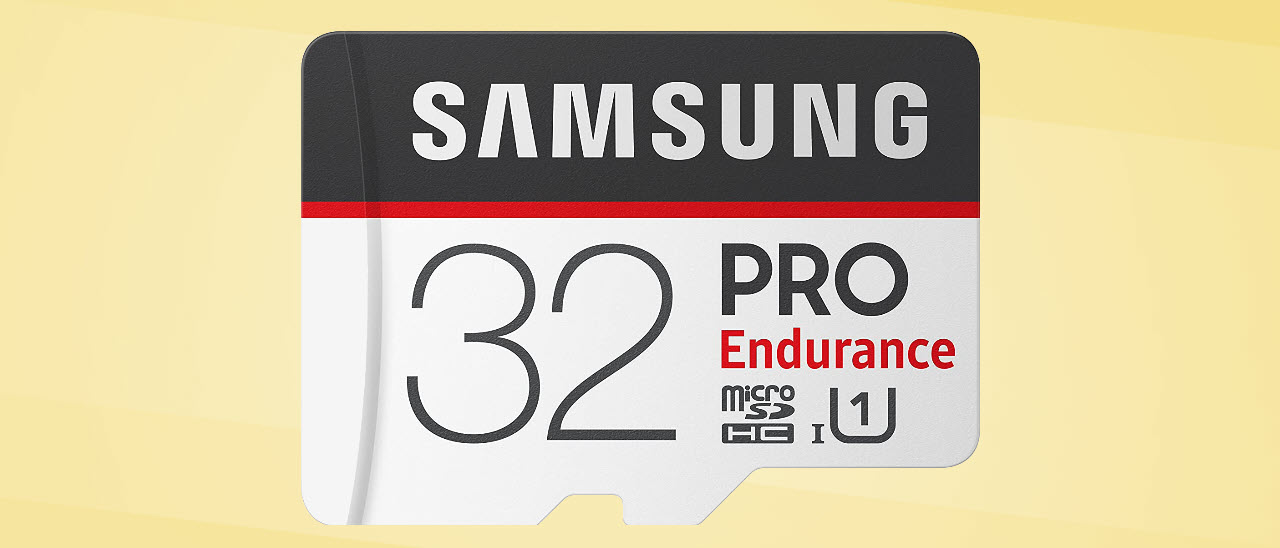
While it doesn't win every test, the Samsung Pro Endurance is a great all-around Raspberry Pi microSD card that promises upward to 25 times greater longevity than a typical carte. While we can't bear witness or disprove this claim, we do know that Samsung has an excellent reputation in the industry and backs the card with a limited lifetime warranty. The company likewise says that the carte is waterproof, temperature-proof and X-ray-proof.
The Samsung Pro Endurance comes close to the leaders on application open times and boot times while achieving fast transfer speeds on every test on every Pi model. On the Raspberry Pi four, information technology achieved the fastest 4K random reads on IOzone and the speediest sequential transfer rate in the Raspberry Pi Diagnostics tool. Though it is labeled every bit UHS 1 speed, it hangs with or outpaces cards that are labeled UHS 3. At $10.99 at publish time, it's not the cheapest card, just also not the nigh expensive.
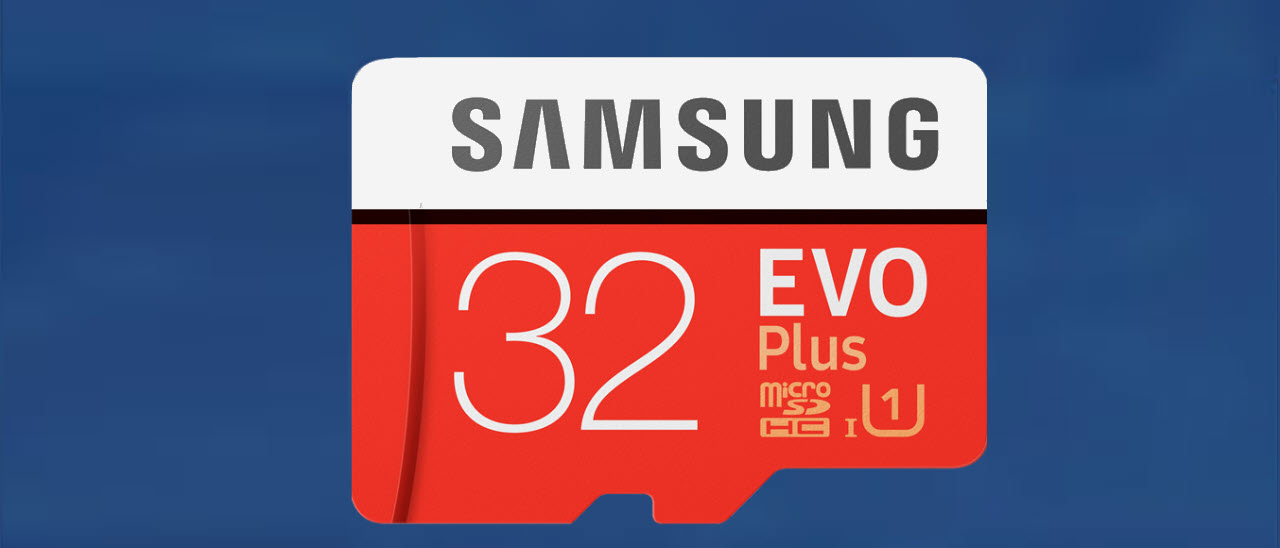
Selling for a minor $8.51 (£seven.29) at publication fourth dimension, the Samsung Evo Plus offers solid performance from a highly-trusted brand at a very reasonable price. Samsung backs the Evo Plus with a 10 year warranty and claims that the card tin can survive X-rays, magnetic radiation and even 72 hours in seawater. Virtually of u.s. probably aren't worried about submerging a bill of fare in h2o, only information technology'south nice to know that if you waterproof your Raspberry Pi, the card will exist fine besides.
In our tests on the Raspberry Pi four, the Samsung Evo Plus offered consistently strong application opens, coming inside 0.2 to 0.3 seconds of the leader. It also booted in a speedy 24.7 seconds, only 0.seven seconds slower than the Kingston Canvass React. The bill of fare had solid transfer rates in IOzone, though its 4K random writes were a piffling disappointing (rates were much higher in the Raspberry Pi Diagnostic test). On the Raspberry Pi 3 B+, the Evo Plus got actually good application open times and slightly better 4K writes.
Other Raspberry Pi microSD Cards Nosotros Tested
Non every product deserves to be listed equally ane of the best Raspberry Pi microSD cards. Here are some other cards we tested and our brief accept on each.
- SanDisk Farthermost (opens in new tab): This carte really was not bad, offer solid all-effectually performance for, at printing time, a little more than than $ten or £ten.
- PNY Functioning Turbo (opens in new tab) : The nearly expensive card we tested at $14.90 (UK cost N/A), this bill of fare did non live up to its proper name or its cost tag. The Raspberry Pi Diagnostic tool gave the Operation Turbo a declining grade, thanks to an atrocious 4K random write speed of 0.8 MBps. Its sequential numbers were also subpar.
- Lexar 633x (opens in new tab): The second least expensive menu we tested, the Lexar 633x isn't all bad. Its app open up and kick times were good, simply its 4K random write speed and its sequential write speed were poor plenty for it to flunk the Raspberry Pi Diagnostic exam.
- Silicon Power Aristocracy (opens in new tab): This card costs a few dollars more than than the Silicon Power 3D NAND and still it performs so much worse. It was the slowest card to boot past far, taking more than twice as long as the fastest booting carte du jour on both the Pi 4 and Pi 3 B+, the Kingston Canvas React. Information technology had the slowest app open times and also failed the Raspberry Pi Diagnostic Test.
- Fatty Dove (opens in new tab): You wouldn't wait much of a no-name brand similar Fat Pigeon then yous won't be disappointed. This card was rated UHS 3, proving how meaningless these speed numbers are. Information technology failed the Raspberry Pi Diagnostic test, cheers to really poor 4K random writes and overall sequential writes.
MicroSD Speed Ratings and Types: What Practise They Mean?
When you're shopping for a microSD bill of fare, whether information technology'southward for Raspberry Pi, a phone, a camera or a Nintendo Switch, y'all'll see every bit many equally 4 different types of speed ratings listed, the first iii of which measure minimum sequential write speed in MBps. The SD Association provides a detailed explanation past to go along it simple, hither'due south a brief list:
- Speed Grade: The oldest course system appears with a circle around the number. The highest class, grade x, is a mere 10 MBps so any new card volition see this standard.
- UHS Speed Class: This is the most common spec and appears equally either a 1 or a 3 inside of a U symbol. The 1 promises ten MBps and the 3 offers xxx MBps. However, in practice, we've tested cards rated as UHS ane that were just equally fast as 3s.
- Video Speed Form: This is shown as a V with a number after it and is normally shown as V30 (30 MBps), V60 (sixty MBps) or V90 (90 MBps).
- Application Speed Course: This is a newish metric that measures IOPS rather than sequential throughput. Cards can exist rated either A1 (1,500 IOPS random read / 500 IOPS random write) or A2 (iv,000 IOPS random read / 2,000 IOPS random write). Few of the cards nosotros tested were rated for A1 (and none for A2) as 32GB cards don't tend to have this classification. However, several users in the Pi community study that the A2 cards make no difference in Pi performance. Jeff Greeling has a comprehensive article comparing A2 and A1 microSD bill of fare performance on Raspberry Pi where he finds zippo benefit.
Almost all cards are marked with the UHS rating or 1 or 3, fewer accept the Video Speed and only a few loftier-stop cards are marked with the Application Speed. In addition to labeling their cards with some of these classes, vendors will offer their own estimates that are much more generous. For example, Samsung claims that its Pro Endurance card can go up to 100 MBps reads and 30 MBps writes, even though it is only labeled every bit UHS class 1 (10 Mbps). In exercise, these classes meant aught, because cards with UHS class one oftentimes outperformed those with form iii.
You'll also come across that some cards are listed as microSDHC while others are specked every bit microSDXC. These standards mean nothing for performance and only tell you something about the capacity that you lot already know from the number of GB. microSDHC (high capacity) cards are those that go up to 32GB and microSDXC cards support higher capacities (merely could too exist 32GB). Either blazon works fine in a Raspberry Pi.
How We Tested Raspberry Pi microSD Cards
We used a combination of synthetic and timed tests to measure out microSD card functioning on Raspberry Pi. Because information technology has the highest possible transfer speeds, nosotros ran the full suite of tests on the Raspberry Pi 4, including FIO (Flexible Input / Output tester), which usually took more v hours to complete. On the Pi 3 B+, nosotros ran just IOZone and the application and kicking time tests and, on the Pi Zero W, which is wearisome to open every app, nosotros used IOZone lone.
IOZone Results on Raspberry Pi microSD Cards
IOzone is a popular Linux storage benchmark that measures read and write speeds. We owe a huge hat tip to Jeff Geerling whose excellent article on microSD card benchmarks inspired united states of america to utilize IOzone in our testing. We configured it to test both random and sequential reads of 4K and one,024K blocks with a total file size of 100MB. We also enabled the direct I/O choice that bypasses the operating organisation's cache then we're getting a improve idea of the card'due south performance on its own.
When we tested on the Raspberry Pi 4, the Silicon Power 3D NAND carte du jour, which coincidentally is listed as UHS Speed 1, comes out on elevation in the earth-shaking 4K random write, 4K sequential write, 4K sequential read, 1,024K random read and ane,024K sequential read tests. The SanDisk Extreme Pro, Samsung Pro Endurance and Kingston Canvas React all put in stiff showings equally well. The Silicon Power Elite, while more expensive than the company's 3D NAND did very poorly as did the Lexar 633x, the PNY Performance Turbo and the Fatty Pigeon 32GB card.
The SanDisk Farthermost Pro dominated the IOzone tests on the Raspberry Pi 3 B+, placing first in every category just one,024K random writes and 4K sequential writes. The aforementioned cards that did poorly on the Raspberry Pi 4 were equally awful on the Pi 3 B+.
IOZone performance on the Raspberry Pi Zero Due west was more of a mixed bag, with a more than even spread of elevation performers in different rounds. However, the SanDisk Extreme Pro won the nearly rounds.
Application Open Times of Raspberry Pi microSD Cards
One of the nigh visible manifestations of Raspberry Pi microSD bill of fare performance is how rapidly your favorite apps load. To measure out, nosotros timed 4 pop pieces of software: Chromium Browser, GIMP, LibreOffice Calc and Scratch Desktop 3. For amend or worse, on both the Raspberry Pi iv and iii B+, there was very little departure between the all-time and worst open up times, with differences of tenths of a second separating the competitors.
Despite the minor differences between cards, on the Pi four, the Silicon Power 3D NAND had the fastest times on every app while different cards came out on top for each application on the Pi 3 B+.
Kicking Times on Raspberry Pi microSD Cards
8 out of the ten cards booted Raspberry Pi 4 in between 24 and 26 seconds, with the Kingston Sail React taking the crown at 24 seconds. Though the Silicon Power 3D NAND bill of fare did so well on application opens, information technology had a significantly slower boot time. And, at 49.3 seconds, the Silicon Ability Elite card was a disaster.
The kick times on the Raspberry Pi 3 B+ told a similar story. All of the non-Silicon Power cards were within two seconds of each other, with the Kingston Sheet React again taking the booting crown. The Silicon Power 3D NAND card wasn't atrocious at 28.9 seconds, but the Aristocracy took a leisurely fifty seconds.
Raspberry Pi Diagnostics SD Card Speed Exam
The Raspberry Pi Foundation has its own speed examination, which measures 4K random reads and writes, forth with sequential writes (of an undisclosed size). The exam non only provides numbers, merely also a pass or fail rating, based on the results.
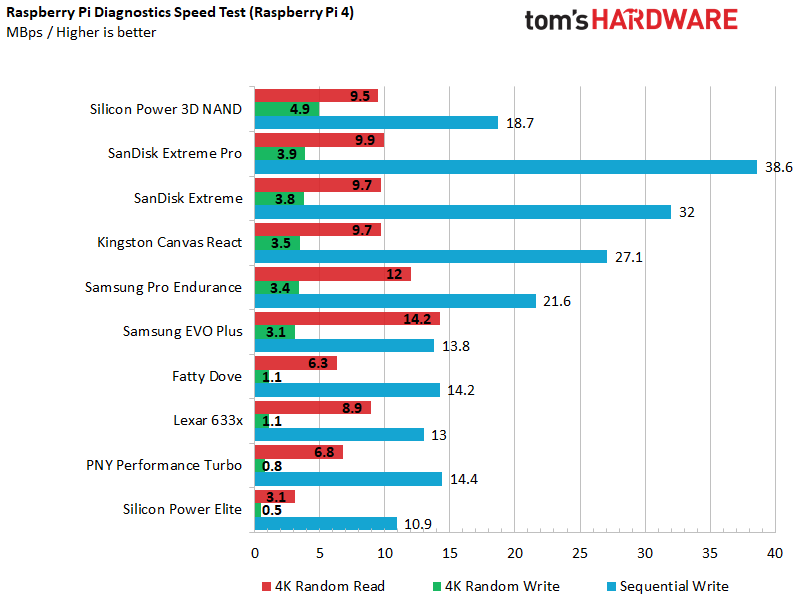
We tested all of our cards on the Raspberry Pi 4, using the Diagnostics exam and four of them -- the PNY Performance Turbo, Lexar 633x, Silicon Power Elite and Fatty Pigeon outright failed -- due to horribly slow 4K random writes. While the numbers were sometimes college than we saw for the same cards in IOzone, they told a similar story.
The fastest bill of fare for 4K random writes was the Silicon Ability 3D NAND while the leader in 4K random reads was the Samsung Evo Plus and the sequential winner was the SanDisk Farthermost Pro.
Bottom Line
The differences between the best cards are subtle enough that you may non be able to tell our tiptop choice from one farther downwardly the list in every workload. Even so, our testing shows that clearly not every Raspberry Pi microSD card is the same and there are many poor performers you should avert. And just because a card carries a particular speed rating, for example UHS 3, that doesn't mean that it volition be faster than some other carte that has a lower rating.
Finding Discounts on the Best microSD Cards
Whether you're shopping for one of the best microSD cards for Raspberry Pi or ane that didn't brand the cut, you lot may notice savings by checking out our lists of the latest Amazon promo codes, Newegg promo codes, Staples coupons, Micro Center coupons or Samsung promo codes
Source: https://www.tomshardware.com/best-picks/raspberry-pi-microsd-cards
Posted by: cobbstind1942.blogspot.com

0 Response to "Raspberry Pi 3 16gb Sd Card"
Post a Comment